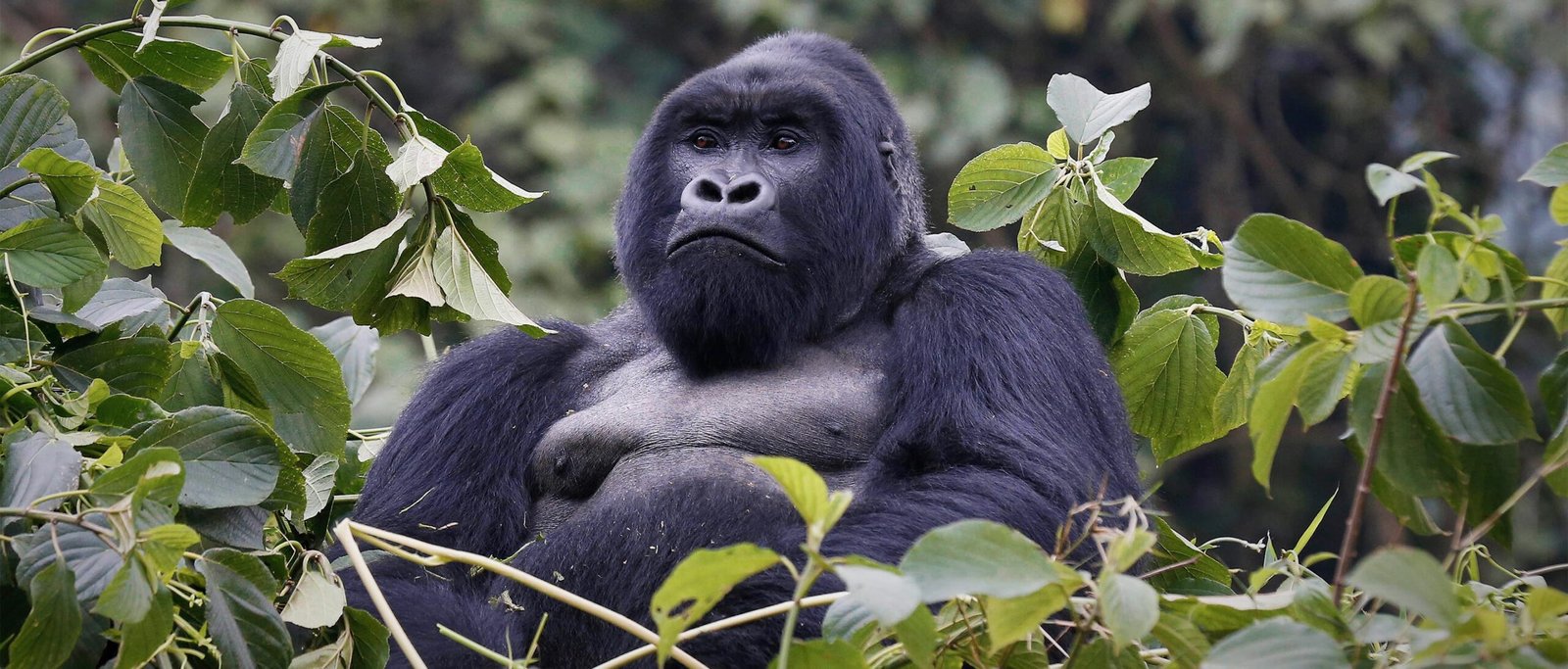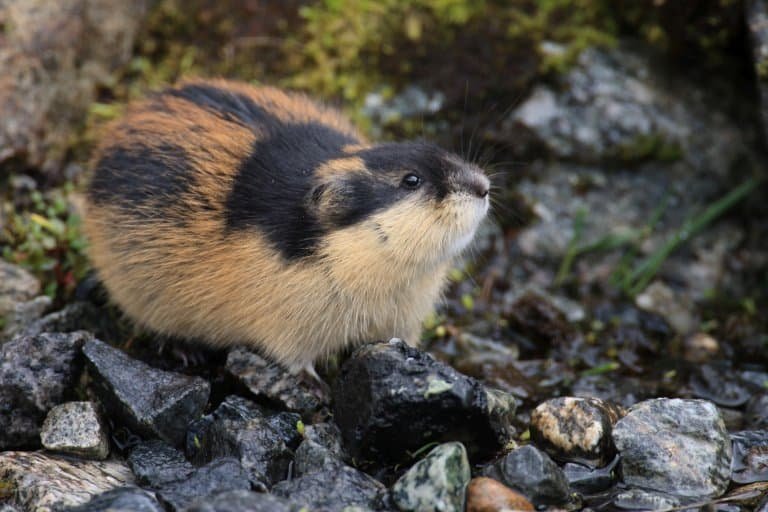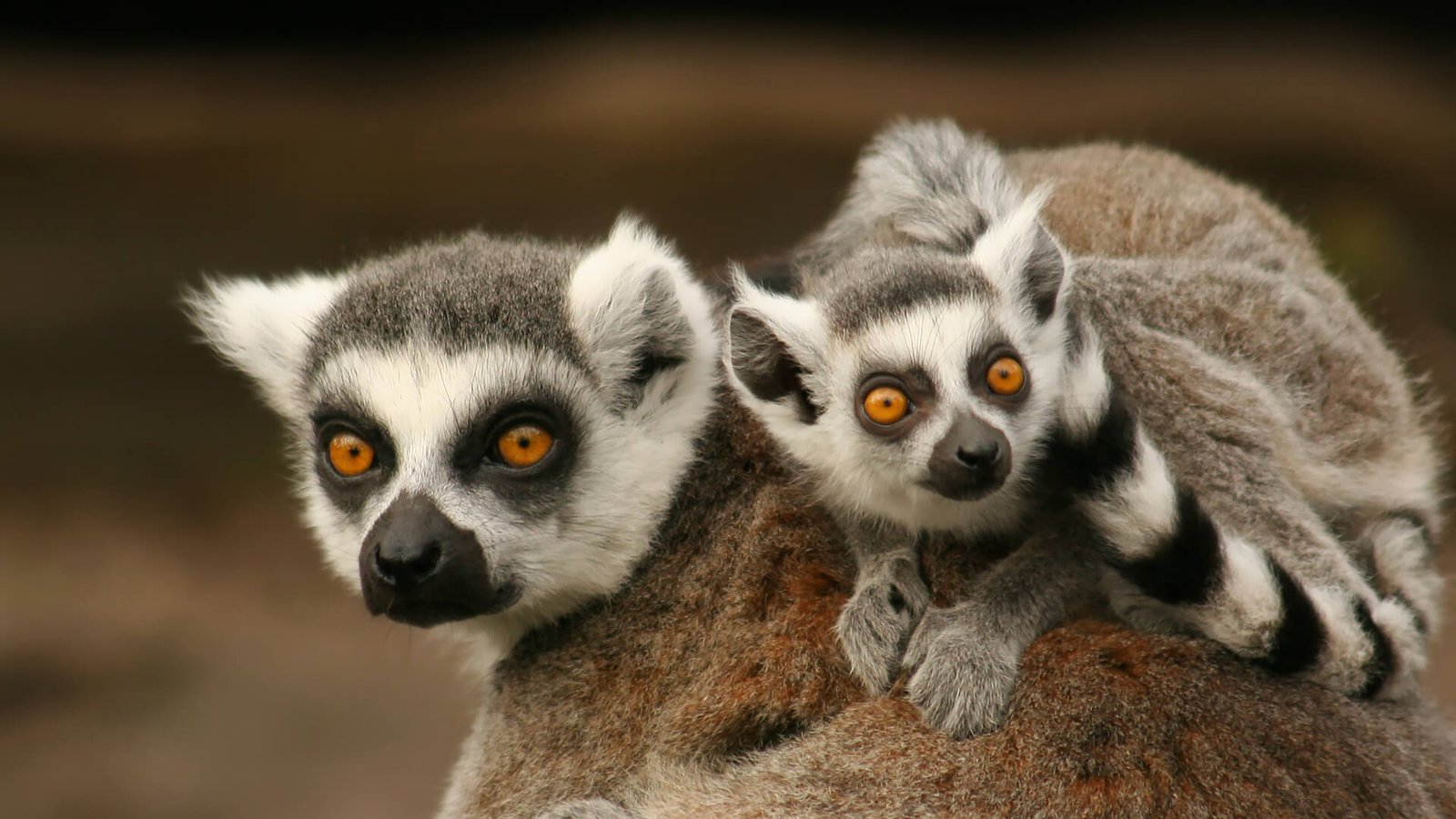Mountain gorilla Facts, FAQs, Behaviour, Habitat and Conservation

Mountain gorilla Facts | Description | Distribution and Habitat | Conservation | Behaviour and Ecology | Interaction with Human | Cultural | Interesting facts | frequently asked questions about Mountain gorilla
“Embark on an extraordinary adventure into the heart of Africa’s lush rainforests and discover the magnificent Mountain Gorilla (scientific name: Gorilla beringei beringei). Towering in strength and grace, these awe-inspiring creatures captivate the imagination with their commanding presence. As one of the world’s rarest and most endangered species, the Mountain Gorilla’s imposing physique, intelligent demeanor, and captivating social interactions make it a true icon of the natural world. Join us on an unforgettable journey to unravel the mysteries of this remarkable mammal and witness firsthand the untamed beauty of the Mountain Gorilla.”
Taxonomy of Mountain gorilla
| Kingdom | Animalia |
|---|---|
| Phylum | Chordata |
| Class | Mammalia |
| Order | Primates |
| Family | Hominidae |
| Genus | Gorilla |
| Species | Gorilla beringei |
| Subspecies | Gorilla beringei beringei |
Morphology of Mountain gorilla
| Category | Description |
|---|---|
| Size | Males: Up to 5.6 feet (1.7 meters) tall, weighing 300-485 lbs (136-220 kg) |
| Females: Smaller than males, reaching up to 5 feet (1.5 meters) tall, weighing 150-250 lbs (68-113 kg) | |
| Body Structure | Robust build with broad chests and muscular arms |
| Large head with a prominent sagittal crest on the skull | |
| Fur | Thick and coarse, often exhibiting shades of black or dark brown |
| Adult males develop silver-gray hair on their backs with age | |
| Hands and Feet | Long, powerful arms and hands with opposable thumbs |
| Large, hairless palms and fingertips for enhanced dexterity | |
| Short, broad feet with opposable big toes for gripping branches | |
| Face and Features | Pronounced brow ridges and a broad, flat nose |
| Small, expressive eyes set apart | |
| Prominent lips and long, pointed canines |

Description of Mountain gorilla
The Mountain Gorilla, scientifically known as Gorilla beringei beringei, is an extraordinary mammal native to the dense rainforests of central Africa. These majestic creatures are among the most endangered species in the world, making every encounter with them a truly special experience.
Mature male Mountain Gorillas can reach heights of up to 5.6 feet (1.7 meters) when standing upright and weigh between 300 to 485 lbs (136 to 220 kg). Females are comparatively smaller, reaching heights of around 5 feet (1.5 meters) and weighing between 150 to 250 lbs (68 to 113 kg). Their robust build, broad chests, and muscular arms reflect their immense strength.
The Mountain Gorilla’s distinguishing features include a large head with a prominent sagittal crest on the skull. Their fur is thick and coarse, often exhibiting shades of black or dark brown. Adult males develop silver-gray hair on their backs as they age, adding to their distinctive appearance.
With long and powerful arms, Mountain Gorillas possess exceptional upper body strength. Their hands have opposable thumbs and hairless palms, enabling them to grasp objects and manipulate their environment with great dexterity. Their feet are short and broad, featuring opposable big toes that aid in gripping branches as they navigate their arboreal habitat.
Their face exhibits pronounced brow ridges, a broad and flat nose, and small, expressive eyes set apart. Prominent lips and long, pointed canines complete their facial features, which contribute to their unique appearance.
As highly social animals, Mountain Gorillas live in close-knit groups known as troops or bands. These troops are led by a dominant silverback male, named after the silver hair on his back. Gorillas are herbivorous, primarily feeding on vegetation such as leaves, stems, fruits, and bamboo shoots.
Unfortunately, the Mountain Gorilla faces numerous threats, including habitat loss, poaching, and disease. Conservation efforts and strict protection measures have been implemented to safeguard their survival, with organizations working tirelessly to preserve their natural habitats and promote sustainable ecotourism.
Encountering these magnificent creatures in their natural habitat is a rare privilege that leaves a lasting impact on anyone fortunate enough to witness their gentle nature and familial bonds. The Mountain Gorilla serves as a symbol of the fragility and resilience of our planet’s biodiversity, emphasizing the importance of conservation and preserving our natural heritage for future generations.
Distribution and habitat of Mountain gorilla
The Mountain Gorilla (Gorilla beringei beringei) is found in a small region in the high-altitude forests of Central Africa. They are endemic to the Virunga Massif, which spans parts of Rwanda, Uganda, and the Democratic Republic of Congo, as well as the Bwindi Impenetrable Forest in Uganda. These areas provide the ideal habitat for the Mountain Gorilla due to their cool temperatures and abundant vegetation.
Their habitat consists of dense montane forests, characterized by a variety of plant species and an intricate network of vines, shrubs, and trees. The Mountain Gorilla’s preference for higher elevations distinguishes them from their lowland gorilla relatives. They are well-adapted to the challenging terrain and colder climate of their mountainous homes.
Behaviour and Ecology of Mountain gorilla
Mountain Gorillas are highly social animals that live in cohesive troops led by a dominant silverback male. These troops typically consist of multiple adult females, their offspring, and a few subordinate males. The silverback is responsible for protecting the troop and maintaining social order.
Gorillas are predominantly herbivorous, with their diet primarily composed of vegetation such as leaves, stems, shoots, fruits, and bamboo. They are known to exhibit an intricate feeding behavior, spending a significant amount of time foraging and browsing for food.
Communication within the troop is essential for maintaining social bonds and resolving conflicts. Gorillas use a variety of vocalizations, including roars, grunts, and barks, to convey messages to one another. They also engage in non-verbal communication through body postures, facial expressions, and gestures.
The Mountain Gorilla’s ecological role as a key seed disperser contributes to the health and diversity of their habitat. By consuming fruits and vegetation, they aid in the dispersal of seeds, helping to regenerate the forest ecosystem.
Conservation of Mountain gorilla
The Mountain Gorilla is critically endangered, facing significant threats to its survival. Habitat loss, primarily due to deforestation and encroachment of human settlements, poses a severe challenge. Additionally, poaching and illegal wildlife trade continue to be pressing concerns, driven by the demand for gorilla body parts and infants.
Conservation efforts have played a vital role in the preservation of the Mountain Gorilla. Collaborative initiatives between governments, conservation organizations, local communities, and researchers have focused on habitat protection, anti-poaching measures, and community-based ecotourism.
Strict regulations and monitoring programs have been implemented to ensure the well-being of the gorillas and minimize disturbances during tourist visits. Revenue generated from responsible gorilla tourism has provided economic incentives for local communities to actively participate in conservation efforts.
Interaction with Human of Mountain gorilla
The Mountain Gorilla’s interaction with humans has been a complex and evolving relationship. Historically, gorillas faced significant threats from habitat destruction and hunting. However, in recent decades, conservation efforts have shifted the narrative towards protection and sustainable coexistence.
Responsible gorilla tourism has allowed limited and regulated access to observe these majestic creatures in their natural habitat. This interaction has provided valuable educational and economic opportunities, raising awareness about gorilla conservation and the importance of preserving their habitats.
Efforts are made to minimize direct contact between gorillas and humans, as gorillas are susceptible to human diseases. Strict guidelines are in place to ensure tourists maintain a safe distance, minimizing the risk of transmitting infections.
Cultural and Historical Significance of Mountain gorilla
The Mountain Gorilla holds significant cultural and historical significance for the communities living in proximity to their habitat. Gorillas feature prominently in local folklore, traditions, and spiritual beliefs, symbolizing strength, wisdom, and the interconnectedness of nature.
Their conservation has also garnered international attention and support, leading to increased awareness about the importance of preserving endangered species and their habitats. The iconic image of gorillas in popular culture has contributed to their recognition as a flagship species for conservation efforts worldwide.
The historical research and study of gorillas have provided valuable insights into primate behavior, evolution, and the interconnectedness between humans and their closest relatives in the animal kingdom. They serve as a reminder of our shared ancestry and the need to protect and conserve our natural heritage for future generations.
Explanatory Notes for Mountain gorilla
The Mountain Gorilla, scientifically known as Gorilla beringei beringei, is a remarkable mammal found in the high-altitude forests of Central Africa. Here are some explanatory notes about this fascinating species:
- Taxonomy: The Mountain Gorilla belongs to the family Hominidae, which includes humans, orangutans, chimpanzees, and bonobos. It is classified under the genus Gorilla and the species beringei.
- Endangered Status: The Mountain Gorilla is listed as critically endangered by the International Union for Conservation of Nature (IUCN). Its population is severely threatened, primarily due to habitat loss, poaching, and human encroachment.
- Social Structure: Mountain Gorillas live in cohesive troops led by a dominant silverback male. These troops consist of multiple adult females, their offspring, and a few subordinate males. The silverback is responsible for protecting the troop and maintaining social order.
- Diet: Mountain Gorillas are herbivorous, primarily feeding on vegetation such as leaves, stems, shoots, fruits, and bamboo. They have a specialized digestive system to process their fibrous diet.
- Physical Characteristics: Adult male Mountain Gorillas are larger and more robust than females, with distinctive silver-gray hair on their backs. They have a massive build, powerful arms, and large canines. Females are smaller in size.
- Habitat: Mountain Gorillas inhabit montane forests at high altitudes, ranging from 8,000 to 13,000 feet (2,400 to 4,000 meters) above sea level. They are adapted to the cool temperatures and dense vegetation of these habitats.
- Conservation Efforts: The conservation of Mountain Gorillas is a collaborative effort involving governments, conservation organizations, local communities, and researchers. Strict protection measures, habitat preservation, anti-poaching initiatives, and responsible tourism have contributed to their conservation.
- Ecotourism: Responsible gorilla tourism provides economic incentives for local communities and contributes to the conservation of Mountain Gorillas. It offers visitors a unique opportunity to observe these magnificent creatures in their natural habitat while promoting education and awareness.
- Research and Monitoring: Extensive research and monitoring programs are conducted to study the behavior, ecology, and health of Mountain Gorillas. This knowledge helps inform conservation strategies and ensures the well-being of the species.
- Symbol of Conservation: Mountain Gorillas have become an iconic symbol of conservation, highlighting the importance of protecting endangered species and preserving their habitats for future generations.
Interesting facts about Mountain gorilla
- Mountain Gorillas are the largest living primates, with males weighing up to 400 pounds (181 kilograms).
- They are primarily herbivorous, but they occasionally consume ants and termites as a source of protein.
- Mountain Gorillas are known for their gentle and non-aggressive nature, despite their impressive size and strength.
- They have a complex social structure and exhibit strong bonds within their troops.
- Mountain Gorillas are highly intelligent and have been observed using tools, such as sticks, to extract insects from tree trunks.
- Gorillas share approximately 98% of their DNA with humans, making them one of our closest living relatives.
- The population of Mountain Gorillas is estimated to be around 1,000 individuals, making them one of the rarest species on Earth.
- Unlike other primates, Mountain Gorillas build nests on the ground to sleep in at night.
- They have a unique vocal repertoire, including distinctive chest-beating displays, roars, and grunts.
- Dian Fossey, a renowned primatologist, dedicated her life to studying and conserving Mountain Gorillas. Her work brought international attention to the species and inspired conservation efforts.
General queries or frequently asked questions about Mountain gorilla
Q: Are Mountain Gorillas dangerous?
A: Mountain Gorillas are generally peaceful and non-threatening unless provoked. They are not known to attack humans unless they feel threatened or their troop is in danger.
Q: How can I see Mountain Gorillas in the wild?
A: To see Mountain Gorillas, you can participate in guided gorilla trekking tours in protected areas such as national parks in Uganda, Rwanda, and the Democratic Republic of Congo. Permits are required and should be obtained in advance.
Q: Are Mountain Gorillas a type of ape or monkey?
A: Mountain Gorillas belong to the family Hominidae, which includes the great apes. They are more closely related to humans, chimpanzees, bonobos, and orangutans than to monkeys.
Q: What is the difference between a silverback and a blackback gorilla?
A: A silverback gorilla is an adult male gorilla with silver-gray hair on its back, while a blackback gorilla refers to a younger, sexually immature male that does not have silver hair yet.
Q: How long do Mountain Gorillas live?
A: Mountain Gorillas can live up to approximately 40-45 years in the wild, although some individuals have been known to live longer.
Q: Can Mountain Gorillas be kept as pets?
A: No, it is illegal and highly unethical to keep Mountain Gorillas as pets. They are endangered species protected by international laws and should remain in their natural habitats.
Q: What are the major threats to Mountain Gorillas?
A: The major threats to Mountain Gorillas include habitat loss due to deforestation, poaching for bushmeat and illegal wildlife trade, and diseases transmitted by humans.
Q: How do Mountain Gorillas communicate with each other?
A: Mountain Gorillas communicate through a variety of vocalizations, including grunts, roars, hoots, and chest-beating displays. They also use body language and facial expressions to convey messages.
Q: Can Mountain Gorillas swim?
A: While Mountain Gorillas are not known for their swimming abilities, they can wade through shallow water if necessary. They generally avoid deep water bodies.
Q: Can I adopt a Mountain Gorilla?
A: Some conservation organizations offer symbolic adoptions or sponsorship programs to support Mountain Gorilla conservation efforts. These programs typically involve contributing to their protection rather than physically adopting an individual gorilla.
Conclusion
In conclusion, the Mountain Gorilla is an extraordinary mammal that inhabits the high-altitude forests of Central Africa. Its critically endangered status and unique characteristics have captivated researchers, conservationists, and wildlife enthusiasts alike. Through collaborative conservation efforts, responsible tourism, and research initiatives, we can strive to protect and ensure the survival of this remarkable species. By raising awareness about the importance of preserving their habitats, supporting local communities, and combating threats such as habitat loss and poaching, we can contribute to the long-term conservation of Mountain Gorillas and the biodiversity of our planet. Let us work together to secure a future where these magnificent creatures continue to roam the forests for generations to come.












